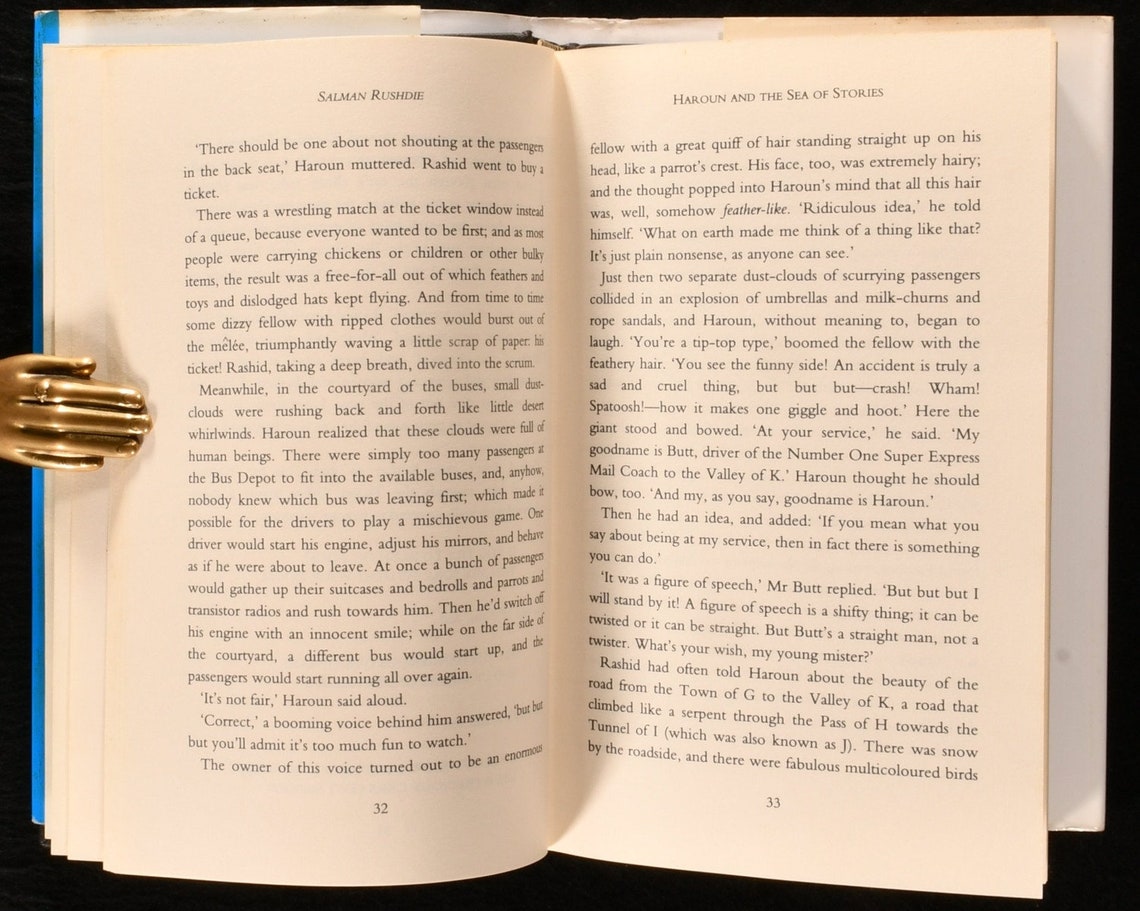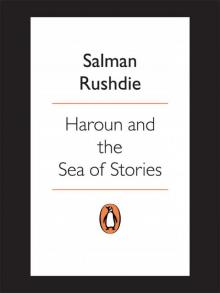

Rushdie’s first allusion to other children’s works is early in the third chapter, when Haroun is introduced to Iff, the Water Genie. Magical realism is a commonly used when writing children’s stories, such as Peter Pan or Harry Potter, both of which begin with a protagonist living in reality and discovering a revolutionary, magical world. Magical realism is defined as genre of fantasy fiction which expresses a distorted, magical account of the real world. The first way in which Rushdie exemplifies this is through using the art of magical realism to further the book’s plot. Thus, Haroun and the Sea of Stories is formatted as a children’s book to demonstrate the bond between Rushdie and his son. Almost contrastingly, Rushdie informs the readers about the importance of storytelling, painting Khattam-Shud, the opposition to all storytelling, as an antagonist and developing Haroun’s gradual love for storytelling and culture.Īfter several years of hiding and isolation from his family, Rushdie longed to connect with his young son, Zafar through a story which would entertain him. By utilizing magical realism to further the plot, allude to other known children works, and introduce a myriad of magical creatures, Rushdie immediately grabs the interest of children. In the tale Haroun and the Sea of Stories, Rushdie simultaneously appeals to children and experienced older readers. Describing the circumstances of his fatwa, Rushdie appeals to the second audience which an overarching framework of how speech promotes a richer private and public life.

.jpg)
One way in which Rushdie hooks his second, presumably older, audience is by explaining the importance of speech and storytelling in a profound philosophical context. Rushdie’s references to King Lear, Plato, and The Beatles demonstrate this dichotomy, resulting in a work which aims to please a child’s sense of wild creativity, yet also attracting more experienced readers familiar to complicated topics. Although the tale resonates with younger audiences and portrays a sense of magical realism, the allegory also makes several allusions to works only familiar to older audiences. In an effort to reconnect and entertain his son, Rushdie wrote an entertaining story for children: Haroun and the Sea of Stories. As a result, the English government put Rushdie in hiding and he was forced to be separated from his young son, Zafar. After he published The Satanic Verses, a novel about Pagan Meccan goddesses which insulted many Muslims, former Iranian Supreme Leader Ruhollah Khomeini issued a fatwa ordering the death of Rushdie. This narrative was a consequence of Rushdie’s many years in hiding. Salman Rushdie’s Haroun and the Sea of Stories tells a fictional tale of a young protagonist named Haroun who travels to the Sea of Stories to help his father gain back his skill of storytelling. Haroun and the Sea of Stories: An Allegory for all Readers


 0 kommentar(er)
0 kommentar(er)
